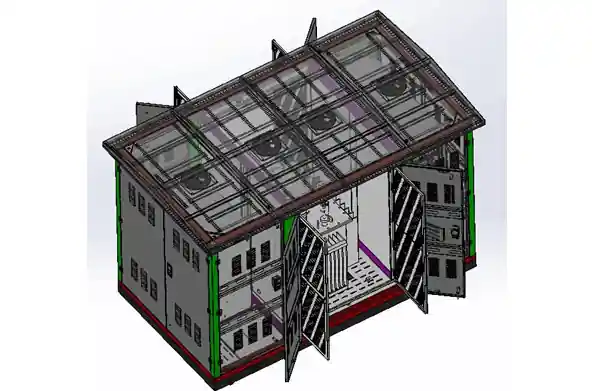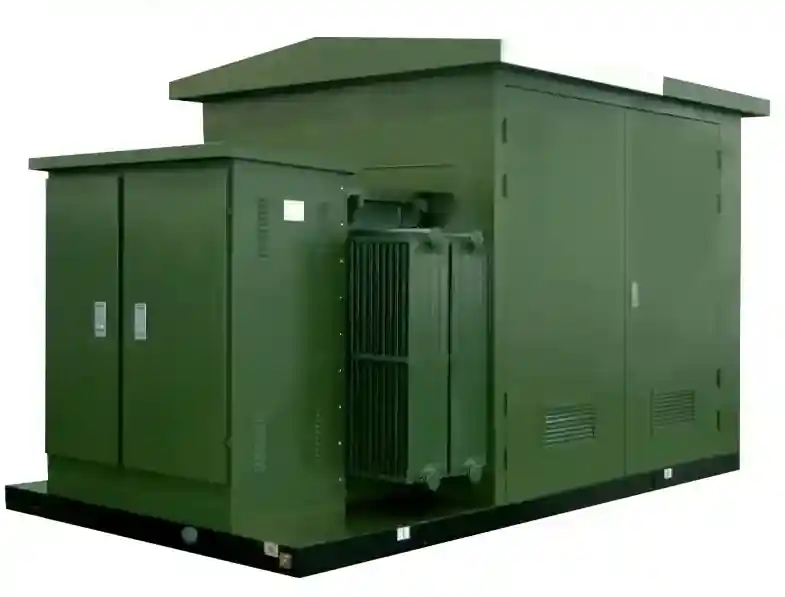- Det centrale koncept: Hvad er en kompakt transformerstation?
- Typiske værdier for kompakte understationer
- Anvendelsesområder
- Markedstendenser og teknologisk udvikling
- Tekniske parametre forklaret
- Forskelle fra traditionelle understationer
- Købstips og retningslinjer for udvælgelse
- Ofte stillede spørgsmål (FAQ)

Det centrale koncept: Hvad er en kompakt transformerstation?
A Kompakt transformerstation integrerer et mellemspændingskoblingsanlæg, en transformer og et lavspændingskoblingsanlæg i en enkelt lukket enhed. Dens primære funktion er at nedtrappe mellemspænding (typisk 11kV, 22kV eller 33kV) til en brugbar lavspænding (normalt 400V) for slutbrugerne.
Kompakte transformerstationer er fabriksmonterede, testede og klar til hurtig udrulning, hvilket gør dem ideelle til by- og industrimiljøer samt miljøer med vedvarende energi.
Ifølge WikipediaDisse transformerstationer er vigtige i områder, hvor plads, sikkerhed og æstetik er afgørende.
Typiske værdier for kompakte understationer
| Parameter | Typisk rækkevidde |
|---|---|
| Nominel spænding (HV-side) | 3,3kV, 6,6kV, 11kV, 22kV, 33kV |
| Nominel spænding (LV-side) | 400V, 690V |
| Nominel effekt | 100kVA til 3150kVA |
| Frekvens | 50Hz / 60Hz |
| Strøm til at modstå kortslutning | Op til 31,5 kA (HV-siden) |
| Beskyttelsesklasse | IP23 til IP54 |
| Afkølingsmetode | ONAN (Oil Natural Air Natural) til transformatorer |

Anvendelsesområder
- Urban boligudvikling: Distribution af lavspændingsstrøm til lejligheder og kommercielle komplekser.
- Industriparker: Fodring af tunge maskiner, HVAC-systemer og produktionslinjer.
- Anlæg til vedvarende energi: Bruges i vindmølleparker og solcelleparker til at forbinde elproduktion med distributionsnet.
- Datacentre: Leverer sikker og uafbrudt mellem- og lavspændingstransformation.
- Transportsystemer: Jernbanestationer og lufthavnsfaciliteter.
En rapport af IEEE Spectrum understreger den voksende efterspørgsel efter kompakte transformerstationer til distribueret produktion og energinet i byer.
Markedstendenser og teknologisk udvikling
- Modularisering: Producenter som ABB, Siemensog Schneider Electric tilbyder nu meget modulære designs til hurtigere tilpasning.
- Miljøvenlige materialer: Anvendelse af bionedbrydelige transformerolier og genanvendelige indkapslingsmaterialer.
- Smart overvågning: Integration af SCADA-systemer og IoT-sensorer til sporing af ydeevne i realtid.
- Højere IP-klassificering: Forbedret støv- og vandbeskyttelse til installationer udendørs eller i barske miljøer.
Tekniske parametre forklaret
Nominel effekt: Refererer til den maksimale kontinuerlige belastning, som transformerstationen kan håndtere uden overophedning. Almindelige enheder spænder fra 100 kVA til små systemer op til 3150 kVA til store industri- eller forsyningsanlæg.
Nominel spænding: Bestemmer input- (mellemspænding) og outputniveauerne (lavspænding). Korrekt spændingstilpasning er afgørende for systemets stabilitet.
Modstandsdygtig strøm ved kortslutning: Angiver evnen til at overleve pludselige højstrømsfejl uden katastrofalt svigt.

Forskelle fra traditionelle understationer
| Aspekt | Traditionel understation | Kompakt understation |
| Installationstid | Flere måneder | Et par uger |
| Behov for plads | Høj | Minimal |
| Omkostninger | Højere startomkostninger | Lavere samlede omkostninger til mellemstore behov |
| Tilpasning | Høj | Modulære muligheder tilgængelige |
| Mobilitet | Vanskeligt | Relativt let |
Kompakte understationer bygger bro mellem fleksibilitet og ydeevne, især hvor der er begrænset plads eller behov for hurtig udrulning.
Købstips og retningslinjer for udvælgelse
- Definer krav til belastning: Estimer omhyggeligt nuværende og fremtidige belastningsprofiler.
- Overvej de miljømæssige forhold: Vælg passende IP-klasser til udendørs, kystnære eller industrielle omgivelser.
- Evaluer transformatortype: Oliefyret eller tørfyret afhængigt af brandrisiko og vedligeholdelsesmuligheder.
- Plan for udvidelse: Vælg enheder med plads til øget belastning eller parallel drift.
- Tjek certificeringer: Se efter, om IEC 62271-202, IEEE C37.20.2 eller tilsvarende standarder overholdes.
At konsultere erfarne producenter eller EPC-firmaer sikrer optimale løsninger, der er skræddersyet til projektspecifikke krav.
Ofte stillede spørgsmål (FAQ)
A1: En kioskstation refererer typisk til en kompakt transformerstation med et specifikt kabinetdesign, ofte mindre og designet til bynetværk. Funktionelt er begge ens, men adskiller sig i struktur og størrelse.
A2: Ja. De er ideelle til solcelleparker, vindmølleparker og mikronet på grund af deres modularitet, hurtige udrulning og kompatibilitet med decentrale energikilder.
A3: Med korrekt vedligeholdelse kan en kompakt transformerstation fungere pålideligt i 25-40 år, afhængigt af miljøforhold og belastningsfaktorer.
Kort sagt er kompakte transformerstationer afgørende for at levere pålidelig, effektiv og fleksibel eldistribution. Forståelse af deres egenskaber sikrer optimalt design og implementering på tværs af et bredt spektrum af moderne infrastrukturprojekter.


